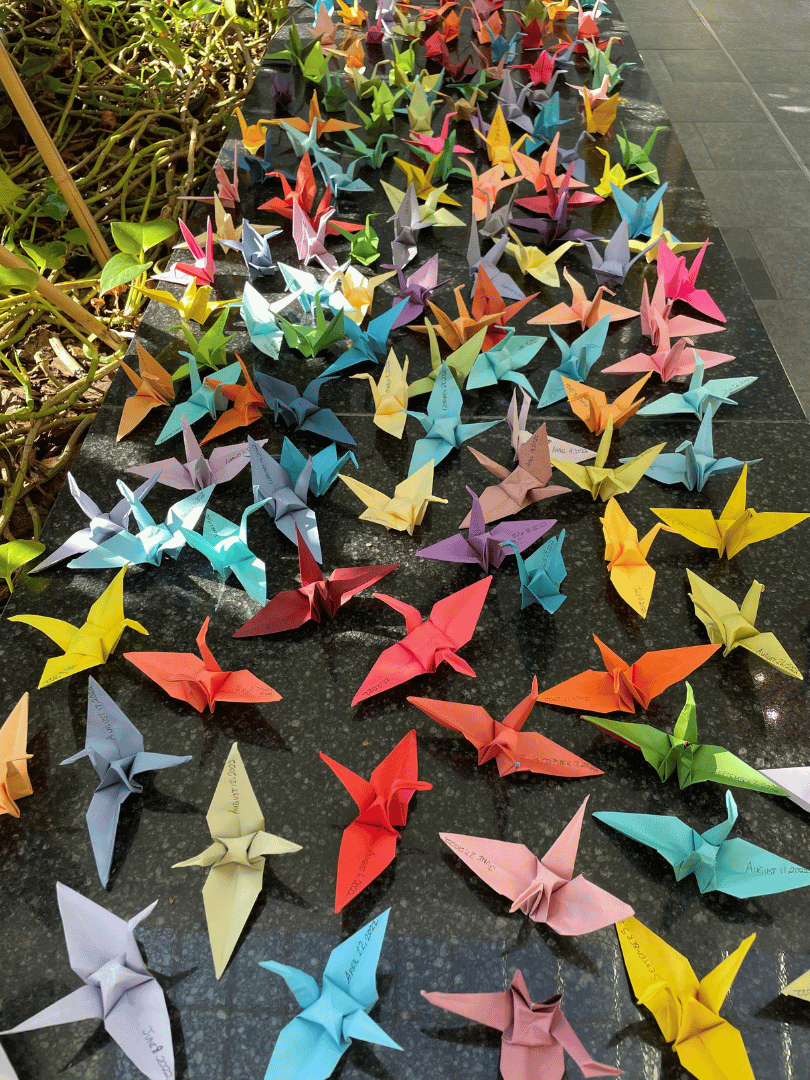188 liver transplants were performed at UHN in 2022. Nurse Co-ordinator Madeleine Auclair created a paper crane for each one. (Photo: Madeleine Auclair)
For people living with end-stage liver disease, the transplant journey can be a long and difficult process. There is no telling how long they may wait for a liver transplant, leading to stress and anxiety alongside potentially worsening symptoms. As they navigate challenging times, support from their transplant team can make all the difference.
As a Nurse Co-ordinator in the Ajmera Transplant Centre’s Pre-Liver Transplant Team, Madeleine Auclair is there for patients awaiting a liver transplant every step of the way. She works with them from the moment they are referred to the Ajmera Transplant Centre and throughout their time on the waitlist. When a liver becomes available, she makes sure they are ready for surgery and recovery. She also helps those working with a living donor move the process forward. Beyond these logistical aspects, Madeleine answers questions and provides assurance and much-needed emotional support for the approximately 100 patients she supports at any given time.
Being there for patients as they await a liver transplant has always been meaningful to Madeleine, but one individual’s journey stood out to her and sparked a creative new project. This patient had been on the transplant waitlist for more than a year, and their quality of life had been significantly impacted by liver disease. Madeleine spoke to them on the phone frequently, providing emotional support and helping them through the long wait. When this patient finally received their transplant, Madeleine was so grateful on their behalf that she decided to do something to mark the occasion. She made a paper crane, folding the patient’s initials inside and writing the date of the transplant on the crane’s wing.

Since that first crane, Madeleine now marks every liver transplant at the Ajmera Transplant Centre in the same way. As she folds the delicate origami paper, she reflects on the patient’s experience and the role that she and the rest of the team play in making the transplant operation happen.
“Doing this slows me down and lets me think about the patient as they leave my care and move on in their journey. It makes me a little more present and intentional to acknowledge that we did this transplant,” Madeleine says.
Madeleine finds the time to fold these cranes during lunch or breaks. Together, they are a powerful representation of the care that she – and the entire team– holds for every patient at the Ajmera Transplant Centre.
Helping to treat a patient and seeing them get better is what brings Madeleine joy in her work. “I get that feeling of satisfaction and fulfillment from watching them get better or if I’m able to make them more comfortable even overnight. These are the things that bring me joy in nursing,” she says.
What gives her hope are the people that are inside of the health care system. Madeleine says, “All of my coworkers, everyone that I work with cares so much about the patients and about helping them get through whatever they’re going through. They are what keep me coming to work every day. And the patients – I’m always amazed by the patients, by their strengths and by how they get through adversity.”
Madeleine’s paper cranes will be on display at UHN during #BeADonor Month in April.
Learn more about the Ajmera Transplant Centre at UHN and how the team is transforming patient care.
